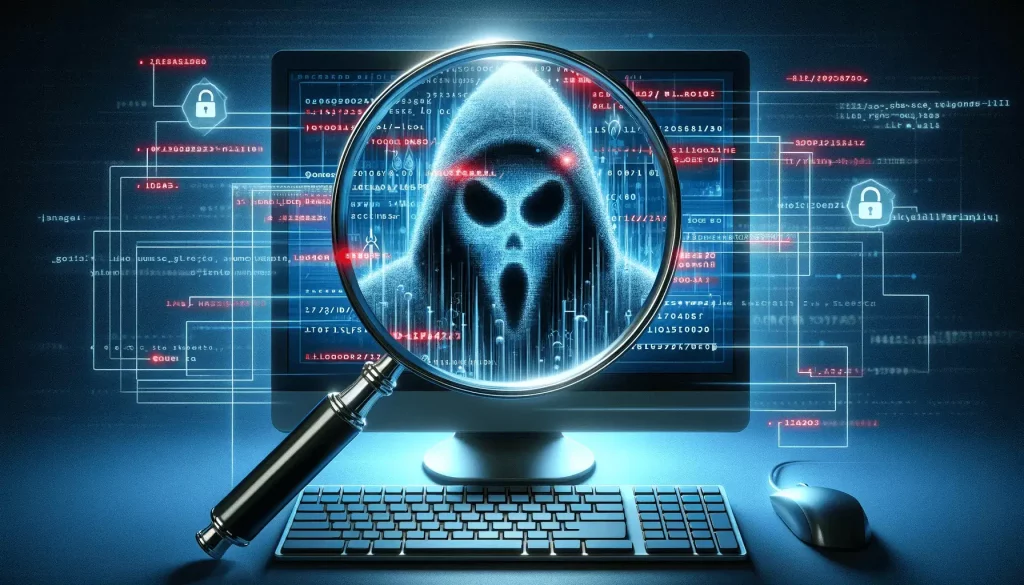In the ever-evolving landscape of cybersecurity, threats come in all shapes and sizes. One particularly insidious and stealthy adversary is fileless malware. In this blog post, we’ll dive into the world of fileless malware attacks, exploring what they are, how to detect them, providing a real-world example, and addressing the question of whether ransomware can be fileless.
What is Fileless Malware Attack?
Fileless malware, often referred to as a fileless attack, is a type of malicious software that operates without the need for traditional executable files. Unlike conventional malware, which relies on files that are stored on disk, fileless malware resides only in the computer’s volatile memory (RAM) and leverages legitimate system tools and processes to carry out its malicious activities. This unique approach makes fileless malware exceptionally elusive and challenging to detect.
Fileless malware typically infiltrates a target system through various means, such as phishing emails, compromised websites, or exploiting vulnerabilities in software. Once inside, it eschews the creation of files on the hard drive, leaving behind no traceable artifacts that are characteristic of traditional malware.
Can You Detect Fileless Malware?
Detecting fileless malware is like hunting a ghost in the machine. Since it operates exclusively in memory, it leaves no tangible footprint on the victim’s hard drive, making it exceedingly difficult to spot using traditional antivirus software. However, there are several strategies and tools that cybersecurity professionals employ to detect and combat this shadowy threat:
1. Behavioral Analysis:
- By monitoring the behavior of running processes, security software can detect unusual or malicious activities in real-time. For example, if a legitimate system process is behaving abnormally, it might be a sign of fileless malware.
2. Memory Analysis:
- Specialized tools and techniques can be used to inspect the system’s memory for suspicious activities. If malicious code is found in memory, it can be flagged and investigated.
3. Endpoint Detection and Response (EDR):
- EDR solutions continuously monitor system activities and can detect anomalies indicative of fileless attacks. They can provide real-time alerts and respond to threats as they unfold.
4. User Training and Awareness:
- Educating users about the dangers of phishing emails and suspicious downloads can prevent initial infection, as many fileless attacks start with a user’s unwitting interaction.
For those looking to bolster their defenses against fileless malware, consider trying out the Watchdog Anti-Malware free trial. This powerful antimalware solution specializes in detecting and mitigating fileless threats, offering a robust layer of protection for your digital assets. You can access a free trial on their website to experience its effectiveness firsthand.
What is a Real-World Example of Fileless Malware?
One infamous case of a fileless malware attack is the PowerShell-based attack known as “PowerWare”. In early 2017, this fileless ransomware gained notoriety for its ability to encrypt files without leaving any files on the victim’s machine. It used PowerShell, a legitimate scripting language and automation framework, to carry out its malicious activities.
PowerWare typically arrived via phishing emails, which contained malicious attachments or links. Once a user clicked on the attachment or link, the malware used PowerShell to download and execute malicious code directly in memory, avoiding the need to write any files to disk. This made it incredibly difficult to detect and combat, and it demanded a novel approach to cybersecurity.
Is Ransomware Fileless?
Ransomware, as a category of malware, encompasses various subtypes, some of which can indeed be fileless. Fileless ransomware, like PowerWare, operates exclusively in memory and doesn’t create files on the victim’s system. Instead, it encrypts files in real-time as they are accessed, and it typically demands a ransom for decryption keys.
However, not all ransomware is fileless. Traditional ransomware, which encrypts files on the victim’s disk, remains prevalent as well. Examples include WannaCry and CryptoLocker, which encrypt files on the hard drive and leave ransom notes behind.
The choice between fileless and traditional ransomware often depends on the attacker’s objectives and the target environment. Fileless ransomware can be more difficult to detect and remove, making it attractive for cybercriminals seeking to avoid detection.
FAQs
Q1: Can fileless malware be completely prevented?
A1: While it’s challenging to entirely prevent fileless malware, a combination of user training, robust endpoint security solutions, and proactive monitoring can significantly reduce the risk.
Q2: What should I do if I suspect a fileless malware attack?
A2: Immediately disconnect the affected system from the network, isolate it, and contact your organization’s IT or cybersecurity team for further investigation and remediation.
Q3: Is traditional antivirus software effective against fileless malware?
A3: Traditional antivirus software can struggle to detect fileless malware due to its unique nature. Employing advanced endpoint detection and response (EDR) solutions is often necessary for effective protection.


